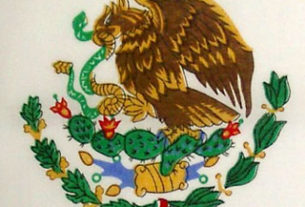Many Mexican hospitals have worked to affiliate themselves with top U.S. and Canadian medical centers and have earned stringent international accreditations.
Mexico has long been the number-one destination for North Americans and Canadians retiring abroad. A hospitable country, Mexico has some of the most beautiful weather and coastlines in the Americas. It is an easy choice for potential retirees, as Mexico’s proximity to the U.S. border allows for frequent returns to visit relatives and the family doctor. Recent innovations now make it even easier as expatriates can affordably stay in constant contact with family and friends using the Internet and safely cruise along the modern, divided toll highways from north to south and east to west. With the baby boomers – the generation born between 1946 and1964 – entering into retirement, Mexico can expect a sharp increase of expats from the North seeking their extended “American dream.”
The greatest deterrent for pre-millennium U.S. and Canadian migrants had been their accessibility to quality health care. With better technologies, the addition of new medical schools and advanced hospitals, improved hospital standards, and affordable access to Mexico’s Social Security System, the baby boomers will be impressed with the improved accessibility to quality health care.
Leading up to 1994, when the North American Free Trade Agreement (NAFTA) became active, it was estimated that Mexico’s health-care sector was dishing out a whopping 100 million dollars a year in tariffs to acquire U.S. and Canadian medical technology. Most all those tariffs have since been removed, freeing up funds for advanced technologies and additional health care services. Overall in Mexico, NAFTA has increased efficiency, equity, and satisfaction for the public as well as for health professionals and health care institutions.
The previous generation’s investments in medical schools for key cities has helped fuel the growth of advanced hospitals. The 1970s and ’80s saw several new medical schools, including the University of Baja California, the Technological University of Monterrey and the Autonomous University of Queretaro. This investment in intellectual capital supported local, continuing medical education and medical research, providing an incentive for medical specialists and hospital dollars to hang around. In this decade alone, Mexico’s two largest hospital chains, Grupo Angeles and Star Médica, seem on track to almost double the number of private, advanced hospitals in Mexican cities.
A complicated, yet worthwhile, goal of NAFTA was the harmonization of hospital standards and regulations among participating countries. Though a gap continues to exist, Mexico and the U.S. have come a long way since 1994. Many Mexican hospitals, competing for affluent nationals and enthusiastic to reach out to a growing population of North Americans and Canadians seeking to address their medical needs in Mexico, have worked to affiliate themselves with top U.S. and Canadian medical centers and have earned stringent international accreditations.
Despite the perseverance of several interest groups, legislation to expand U.S. Medicare’s protective umbrella into Mexico for its 65,000 pension beneficiaries has repeatedly failed. Fortunately, for retirees that can’t afford or do not prefer private health insurance, Mexico’s Institute of Social Security is available to foreigners.
Many foreigners who don’t pay into Mexico’s Social Security system or purchase a private medical plan attest that Mexican health care is so affordable that they will pay out-of-pocket for basic medical needs and return to the U.S. only for serious health problems. An office visit to the doctor in Mexico runs between $30 and $40 USD, and a hospital room is $90 to $100 USD.



The San Antonio hospital [Editor: Hospital San Antonio del Lago de Chapala] has a way to charge with cards, but they tell their employees not to use them so that the doctors can receive cash. An employee there told me that they pay them a commission if they charge cash. Doctors like González Urzua have a terminal in their office and of course prefer that you pay cash. Even the doctors tell him that they will earn more money if they collect in cash.